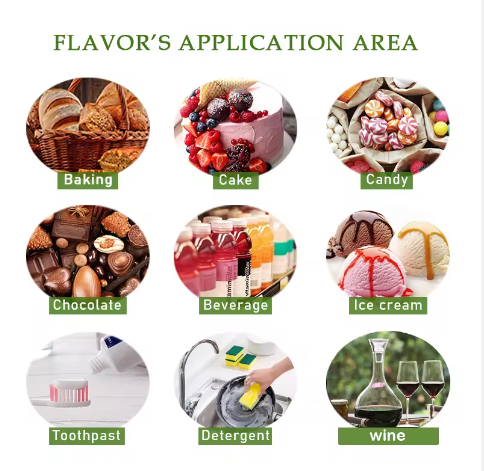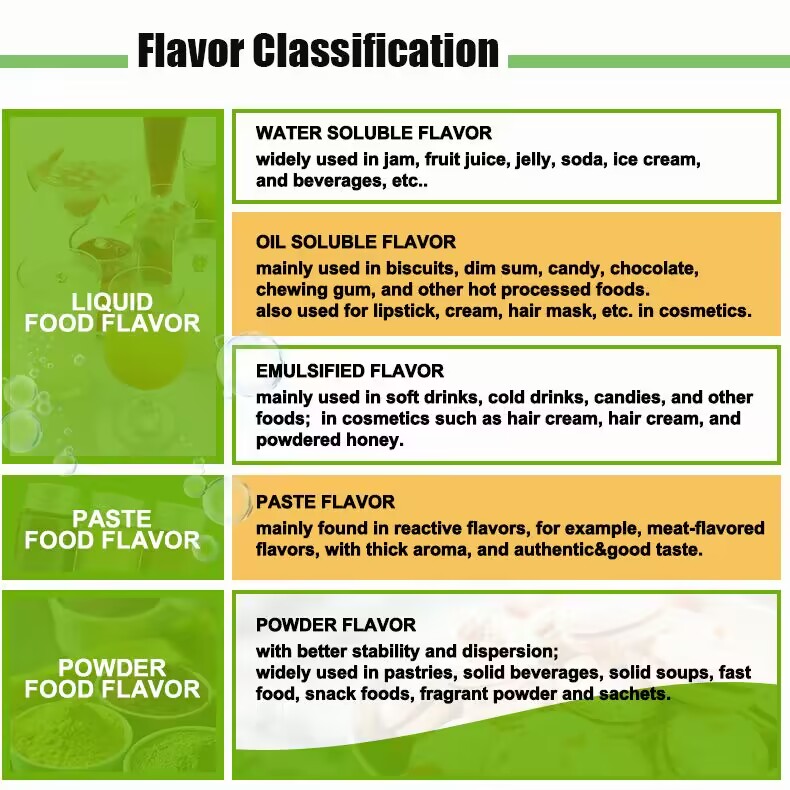
The current global tariff war and theih theand theInternational Labor Day coming next week.
As you know, with the current global tariff war and theih theand theInternational Labor Day coming next week, we expect oursales volume to increase significantly in the months aftero. rhethe holiday, so all sales staff of all departments of Bestfulishedwish you a happy International Labor Day andseize therombest order time before the holiday. We willpromise togive priority to you to ship on time as soon as possible

Lorem ipsum dolor sit amet, consectetur adipiscing elit. Ut elit tellus, luctus nec ullamcorper mattis, pulvinar dapibus leo.Food flavors are widely used in the modern food industry, mainly to enhance, improve or simulate the flavor of food to meet consumers’ demand for diversified and convenient food. The following are the main application areas of food flavors:
### **1. Meat processing**
– **High-temperature meat products** (such as ham, canned food): High-temperature resistant oil flavors or heat-reactive flavors are required to compensate for the loss of flavor caused by high-temperature sterilization.
– **Low-temperature meat products** (such as cold cuts, ready-to-eat meat): Highly volatile flavors are required to enhance the aroma when eaten at low temperatures.
– **Chinese meat products** (such as braised meat, bacon): Combine traditional flavors and use customized flavors to enhance the aroma, such as braised beef flavor and braised flavor.
### **2. Convenient food**
– **Instant noodles, instant rice noodles**: Add meat flavors (such as beef and chicken flavors) to enhance the aroma of the soup base.
– **Pre-prepared dishes**: such as self-heating rice and quick-frozen dumplings, use flavors to maintain the “freshly made” flavor, such as wok flavors to simulate the aroma of stir-frying.
### **3. Snack foods**
– **Puffed foods, spicy strips**: Use flavors to enhance the flavor, such as spicy strips flavors and barbecue flavors.
– **Biscuits, potato chips**: Add high-temperature resistant flavors (such as cheese flavors and onion flavors) to enhance the taste.
### **4. Condiments**
– **Chicken essence, seasoning sauce**: Use meat flavors (such as pork essence powder and old hen spices) to enhance the umami taste.
– **Hot pot base, soup**: Add flavors (such as beef bone soup flavors) to simulate the flavor of boiling.
### **5. Baked foods**
– **Bread, cakes**: Use flavors (such as vanilla extract and cream flavors) to cover up the egg smell and enhance the aroma.
– **Chocolate products**: Add chocolate flavors to enhance the fullness of the flavor.
### **6. Beverages and desserts**
– **Juice, carbonated drinks**: Use fruit flavors (such as mango flavor, lemon flavor) to enhance the fruity aroma.
– **Ice cream, candy**: Add flavors (such as strawberry flavor, mint flavor) to enrich the taste.
### **7. Catering industry**
– **Chain restaurants**: Use standardized flavors to ensure consistent flavors in each branch, such as stewed flavors and barbecue flavors.
– **Fast food industry**: For example, fried chicken and hamburgers, use flavors to enhance the meaty aroma.
### **8. Other applications**
– **Pet food**: Add meaty flavors to improve palatability.
– **Cosmetics and daily chemicals**: Some flavors (such as mango flavor) are used in skin care products and perfumes.
### **Summary**
The application of food flavors covers almost all areas of processed food, from meat products to beverages, baked goods, and standardized catering production. Its core role is **to make up for the loss of processing flavor, enhance food attractiveness, and reduce costs**. However, reasonable and compliant use is key, as excessive or illegal addition may pose health risks.

Dosage forms and application range of edible flavors
Water-based flavors: The solvent is ethanol and distilled water, which is not resistant to high temperatures,
soluble in water but not in oil. It dissolves or decomposes in water to become clear and transparent,
with a slight top fragrance, but lacks heat resistance. Main uses: cold drinks, popsicles, beverages, alcoholic beverages and other industries.
Water-oil flavors: The solvent is propylene glycol, and the water-oil temperature resistance is 150℃℃. The main uses are:
electronic cigarette oil, jelly, soft candy, beverages, bait and other industries.
Oil-soluble flavors: The solvent is glycerol, triacetin, vegetable oil, ODO, etc., which is resistant to high temperatures of 200°C
and has good fragrance retention. The main uses are: baking industry, candy and other industries.
Powdered flavors: The carrier is corn starch, glucose, maltodextrin, etc., which is resistant to 100℃ and
is generally used in solid beverages, tablet sugar, pet feed and other industries.
Lorem ipsum dolor sit amet, consectetur adipiscing elit. Ut elit tellus, luctus nec ullamcorper mattis, pulvinar dapibus leo.

